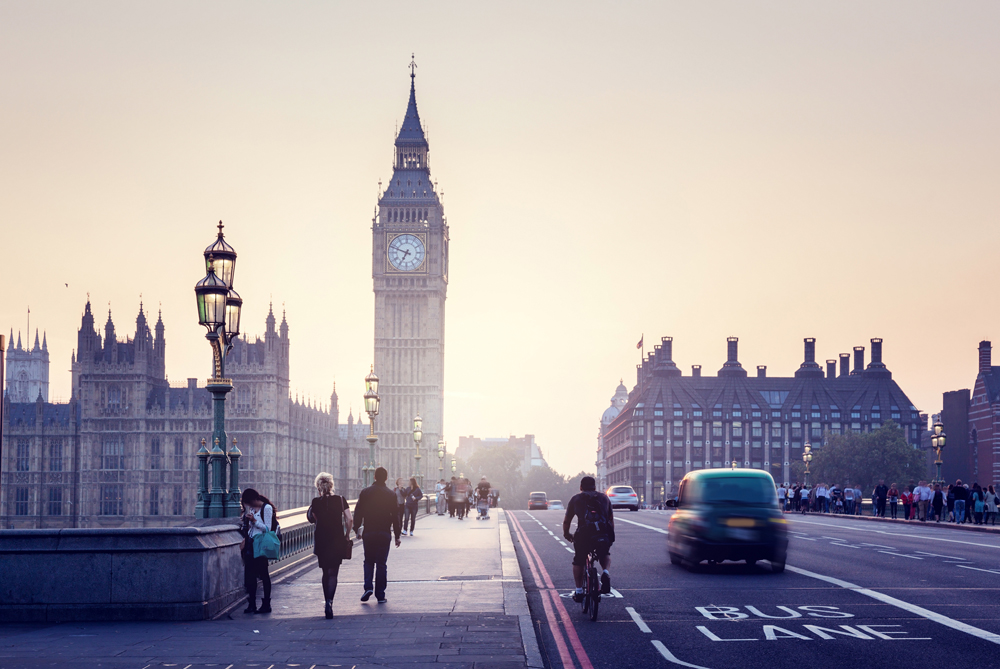English St. Petersburg: How dandies and ale came to the banks of the Neva
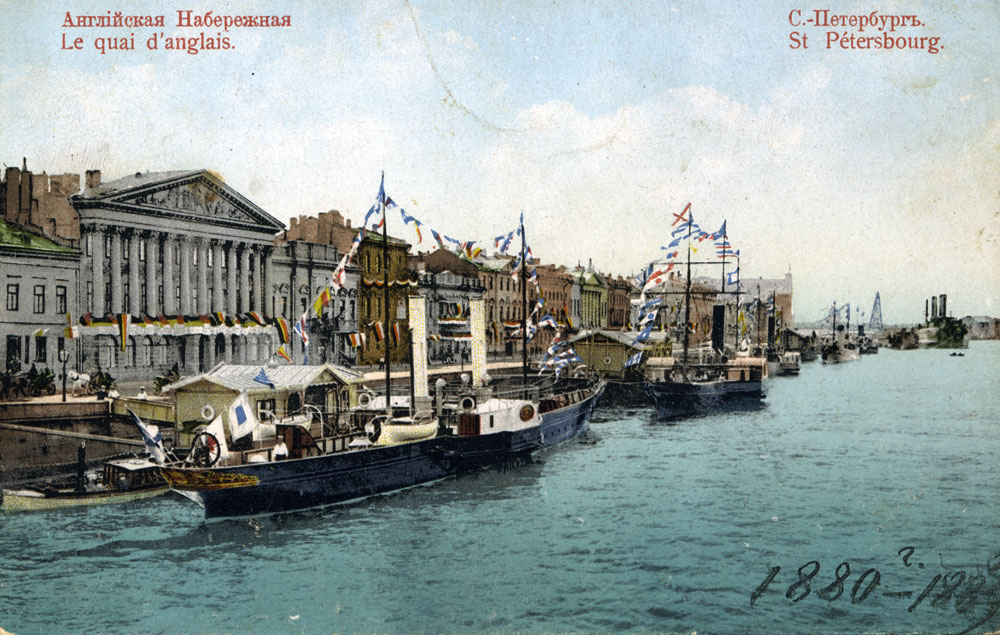 Angliiskaya Naberezhnaya (English Embankment), an old postcard. Source: Lori / Legion Media
Angliiskaya Naberezhnaya (English Embankment), an old postcard. Source: Lori / Legion Media
Political and economic relations between Russia and Great Britain first began in the 16th century during the dark times of Ivan IV (Ivan the Terrible). At that time, Queen Elizabeth of England organized a trading campaign aimed at the “discovery of countries, states and territories, not known and not connected by marine ways.”
One of the countries she most desired to establish ties with was Russia, or Muscovy as foreigners called it at the time.
The two monarchs, Ivan and Elizabeth, exchanged presents and wrote letters not only of a diplomatic but also of a friendly nature. It is even suspected that the Russian tsar wrote to the English queen with a proposal of marriage. But the story goes that Elizabeth didn’t like the portrait of her Russian suitor and rejected Ivan.When Peter the Great took the Russian throne, he set off for Western Europe with the aim of studying and collecting the best inventions and achievements he saw as necessary to create a new, Western-looking Russia.
One of the places he had long dreamed of seeing was London. The city itself impressed Peter deeply, and was apparently one of the examples he had in his head when he was building St. Petersburg.
In London he visited many places and occupied himself with many activities: He visited the Houses of Parliament, met Sir Isaac Newton, watched the stars and planets at the Royal Observatory in Greenwich, attended fights and worked as a simple carpenter for a shipbuilding yard in London. And of course, he was introduced to the court.
William III, the English king, presented the young Russian tsar with a stunning gift – a high-speed yacht called Royal Transport. He also organized special marine exercises near the Isle of Wight.
The English head for St. Petersburg
In 1704 the first English ship arrived in the waters of the Neva. On board were many engineers, mathematicians, builders, mechanics, merchants and doctors.
 Click to enlarge: Panorama showing the English Embankment. Source: Lori / Legion Media
Click to enlarge: Panorama showing the English Embankment. Source: Lori / Legion Media
An English community started to grow in the new Russian capital, and unsurprisingly the new arrivals first settled not far from the port, as it was convenient to meet ships with goods for their businesses. The street where they started to live was called the “English Line,” or Angliiskayaperspektiva – the “English Prospect,” today’s Angliisky Prospekt.
By the 18th century the street had become one of the busiest trading thoroughfares in the city. There were about 28 English trading houses, and many shops sold everything, from clothes to maps, books and medicine.
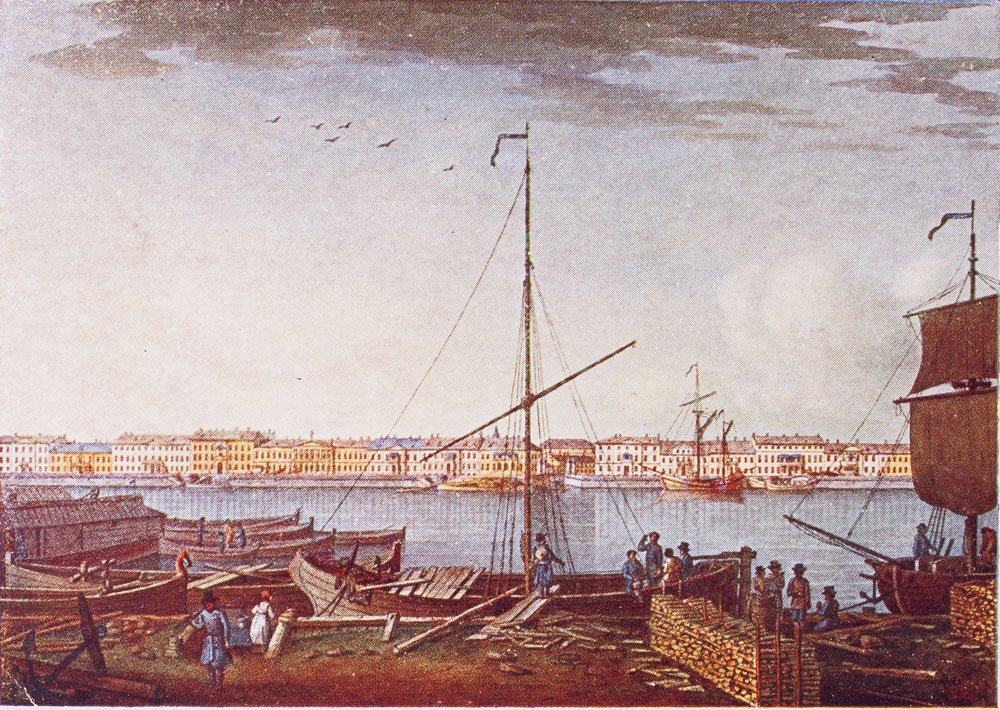 English Embankment at the end of the 18th century. Source: Lori / Legion Media
English Embankment at the end of the 18th century. Source: Lori / Legion Media
At that time St. Petersburg’s English-speaking community numbered 1,500 – 1 percent of the city’s total population.
However, in the 19th century the status and the role of the street changed, and it became one of the most fashionable and bohemian streets in St. Petersburg. This change in status was a result of the street’s proximity to a number of theaters and conservatories, and many dancers, ballerinas, musicians, poets, composers, actors and actresses had flats here.
This artistic community formed the St. Petersburg bohemian beau monde and its members were models for new trends in fashion, manners and behavior.
Merchants and doctors on English streets
House number 39 on Angliisky Prospekt tells us about the life of such trend-setters. Many flats here belonged to ballet dancers, while the building also housed so-called rehearsal halls, where the residents could practice their roles and dances. One of the most famous residents of this house was the great ballet dancer and choreographer Vaslav Nijinsky.
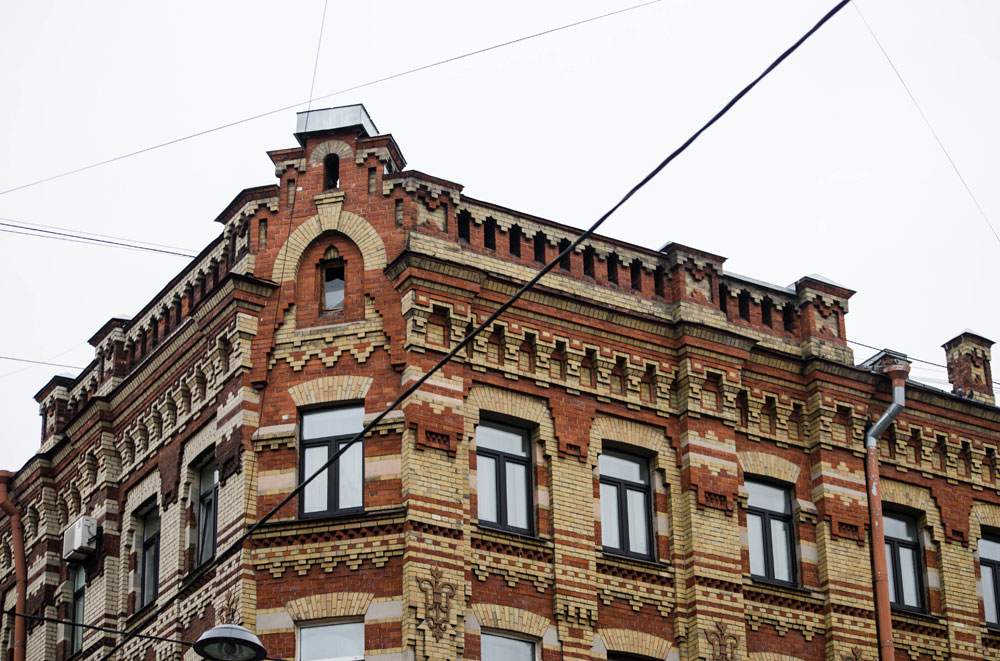 House 39. Source: Valeria Melnikova
House 39. Source: Valeria Melnikova
Men’s fashion of that time was English, so it was here that the first Russian dandies appeared, on the trendy English Prospect. They wore cylinders and bowler hats, wrapped white scarves around their necks (every well-known dandy had his own secret to wearing them, and many young admirers were ready to pay money for sartorial advice).
Every morning Russian dandies read popular magazines called Dandy and Gentleman and Fashion, drank English ale with oysters in one of three English pubs located on the English Prospect or visited one of many English barbers that used the famous Sheffield razors.
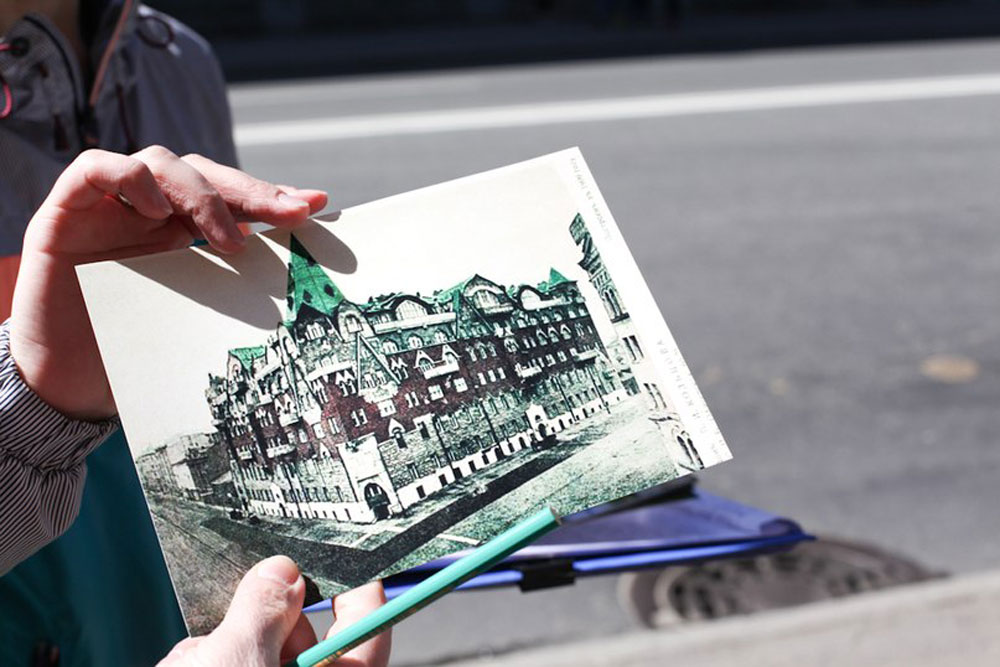 The Fairy Tale house (number 21-23). Source: Valeria Melnikova
The Fairy Tale house (number 21-23). Source: Valeria Melnikova
Number 21-23, meanwhile, was the first building in the city to see the use of electric technology to prepare an English-style breakfast. Among the citizens of St. Petersburg the building is today known as “the fairytale house,” or the house of Anna Pavlova.
This outstanding Russian ballerina, who lived here for many years, toured abroad a lot and visited London many times. There she saw a brand new way of making breakfast without the servants’ help, using a kettle, a coffee-pot, a toaster and an egg-boiler. She loved the idea so much that upon her arrival in St. Petersburg she started to invite friends and prepare “electrical” English breakfasts herself.
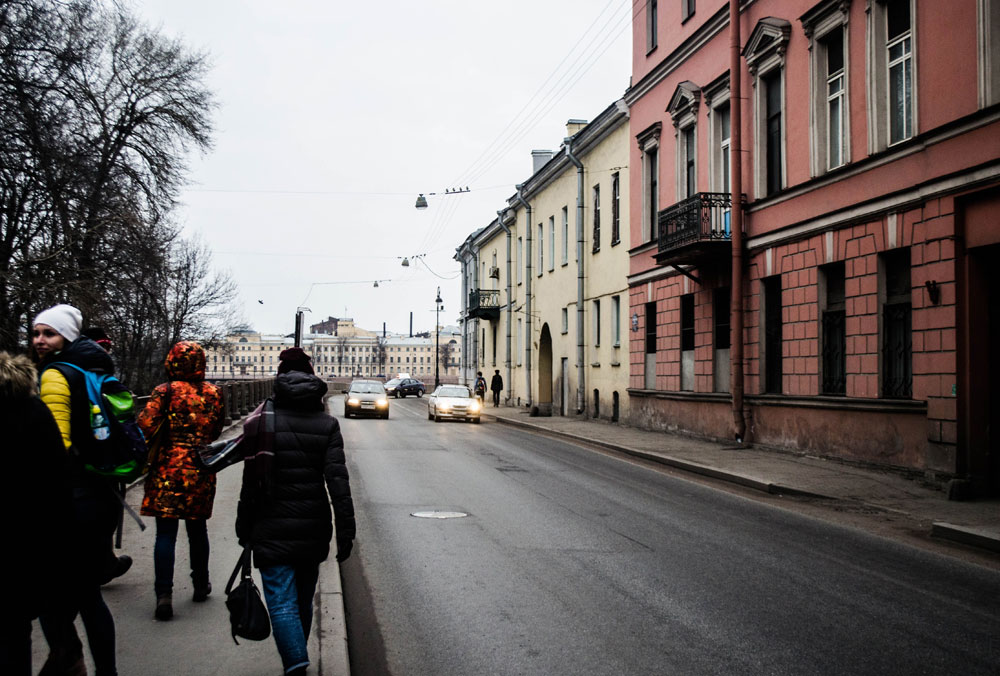 English Prospect on the approach to the English Embarkment. Source: Valeria Melnikova
English Prospect on the approach to the English Embarkment. Source: Valeria Melnikova
At its westward end, Angliisky Prospekt opens out onto the River Neva and Angliiskaya Naberezhnaya (English Embankment), the main street of the Russian capital in the 18th century, and essentially its calling card. The role of this street was to impress visitors with the beauty and splendor of the northern capital, as it was the first street which all foreigners saw when they arrived in St. Petersburg by sea.
All Russian monarchs paid special attention to the state of the embankment and the houses along it, and inspected it from time to time. If the appearance of the house didn’t correspond to the strict requirements, the owners of the house could be punished or fined.
By 1775 all the houses on “the English Embankment” belonged to rich English merchants, royal bankers, royal doctors, admirals and mechanics.
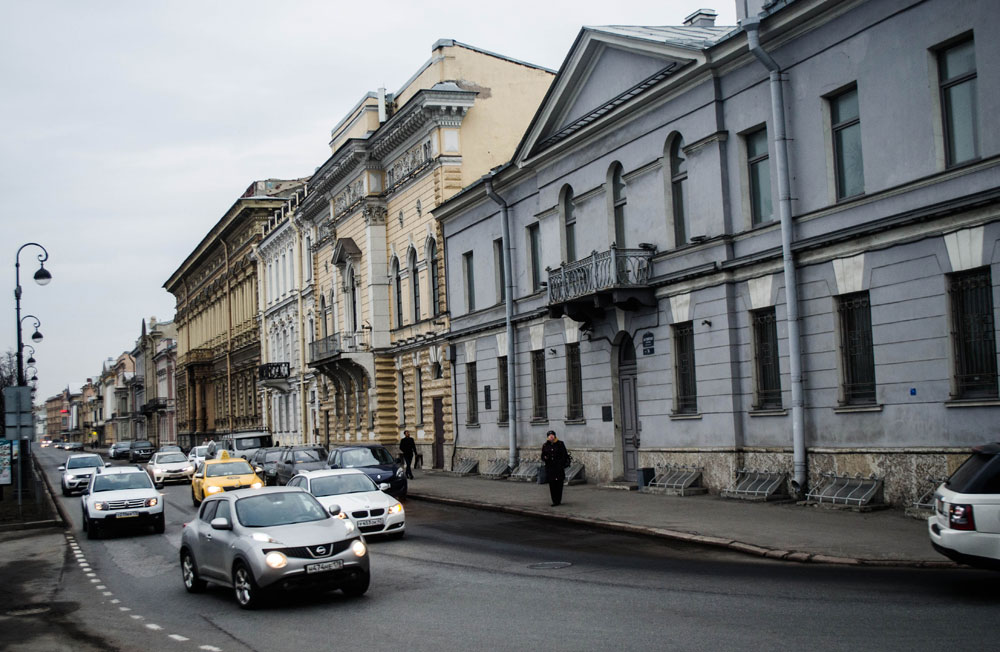 House 74. Source: Valeria Melnikova
House 74. Source: Valeria Melnikova
House number 74 belonged to James Wylie, private doctor of Alexander I. In 1790 he was invited to Russia by the renowned doctor John Rogerson, who treated Catherine II, Paul I and Alexander I. The latter later retired and returned to England.
The idea of having English doctors originated with Peter’s father, Tsar Alexei Mikhailovich. His private doctor Samuel Collins even wrote a book upon his return to London, called The Present State of Russia.
Not only did Russian monarchs owe their health to English doctors, but ordinary people too. It was Thomas Dimsdale, an English doctor, who first carried out a vaccination against smallpox in St. Petersburg during the reign of Catherine II (the Great). The empress decided to begin by receiving a vaccination herself and thereby show an example to her people.
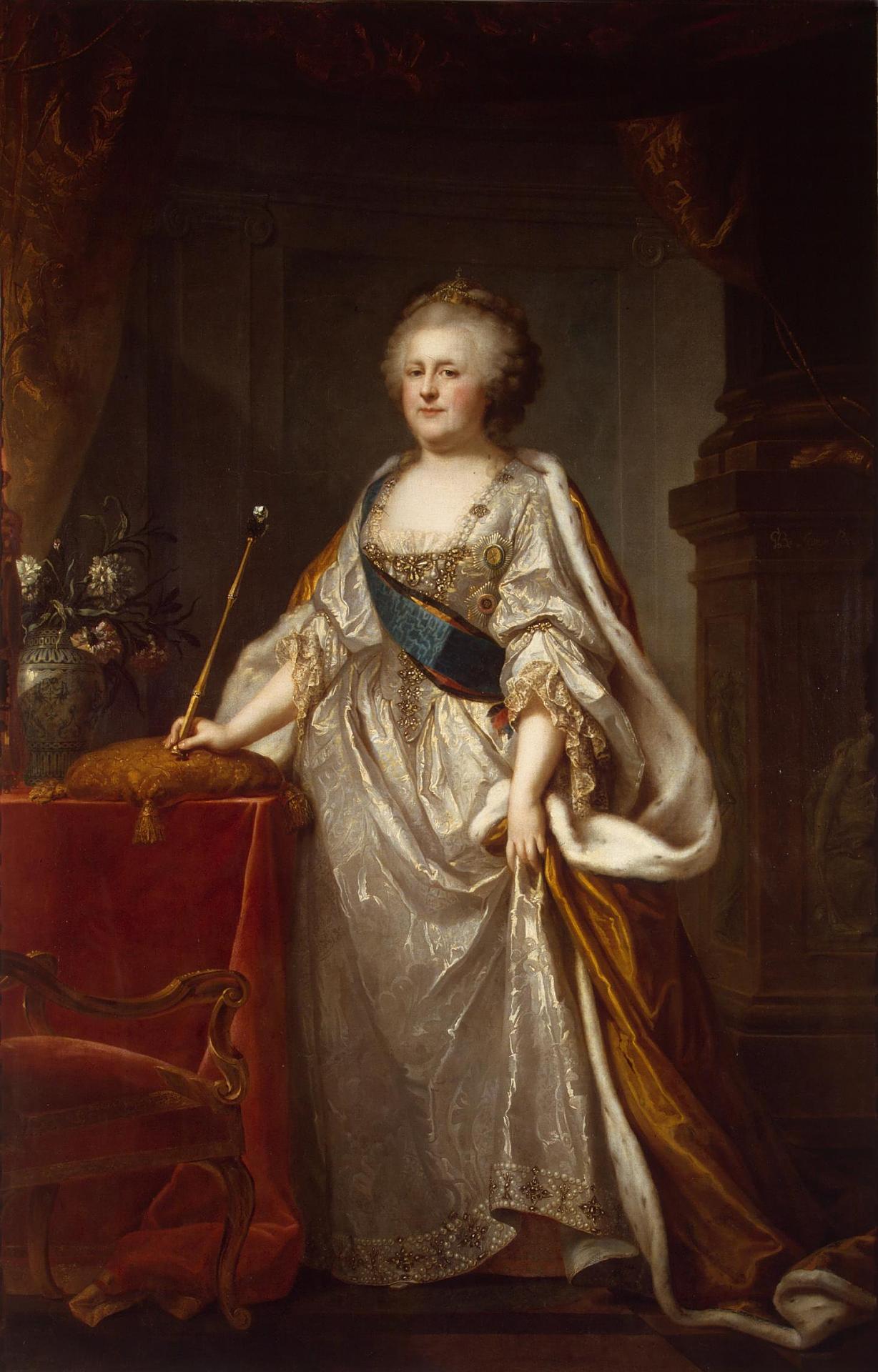 Lampi, Johann Baptist, I. Portrait of Catherine II, 1794. Source: courtesy of the State Hermitage Museum, St. Petersburg
Lampi, Johann Baptist, I. Portrait of Catherine II, 1794. Source: courtesy of the State Hermitage Museum, St. Petersburg
For this purpose Dimsdale brought an ill boy named Sasha Markov into Catherine’s private rooms, which was extremely risky. But at that time there were no vaccines or syringes, so the doctor had to take some particles of the smallpox from the body of the sick child and place them into a cut made on the arm of the Empress.
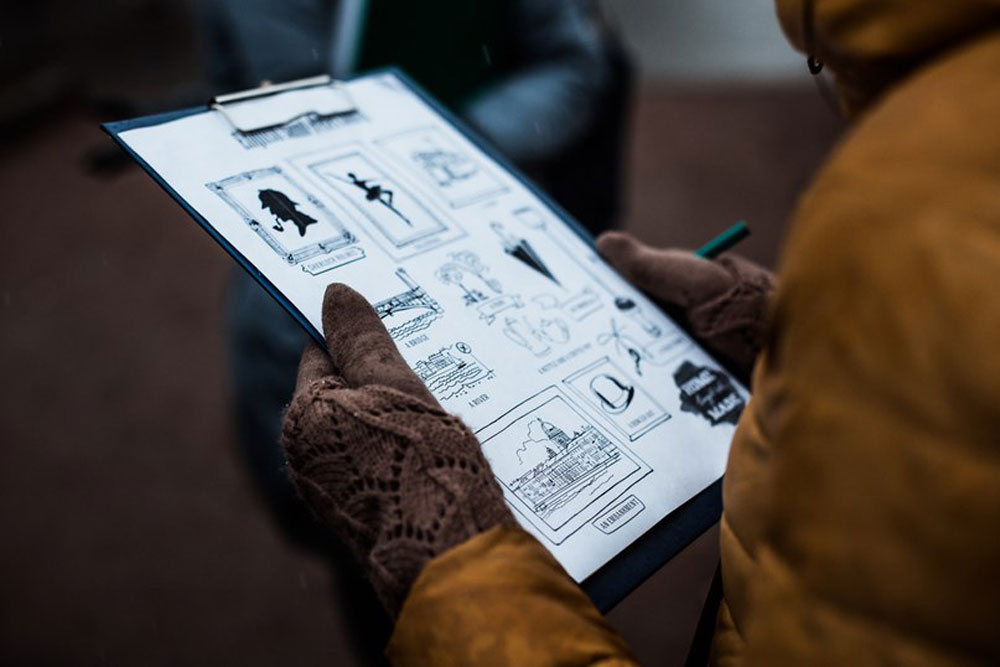 Signs of English Petersburg. Source: Valeria Melnikova
Signs of English Petersburg. Source: Valeria Melnikova
All went well and soon after treating Catherine, Dimsdale carried out an “injection” on her little son, the future Tsar Pavel I. After this, people from all over St. Petersburg flocked to him for vaccinations, calling him a “master of smallpox.”
House number 70 on English Embankment is known as the house of “English merchants.” They say that behind the house there was a real English garden where exotic fruit was grown, unusual for such northern climes: grapes, pineapples, peaches and pears.
Nevsky Prospekt comes off second-best
It may seem hard to believe nowadays, but in the 19th century English Embankment was more popular than the city’s principal artery, Nevsky Prospekt.
“At this time of the year Nevsky is not popular for walking,” wrote the local newspaper Nevskaya Pchela. “Now it is used only for business. The walking public arrives from 2 p.m. to 4 p.m. on the English embankment and enjoys the first spring sun rays. You can walk on the broad clean and dry pavement along the embankment.”
The heart of English St. Petersburg and the English community was house number 56. On March 1, 1770 Francis Gardner opened an English club here. At first, its members were only Englishmen who worked and served in St. Petersburg, but later Russian aristocrats were also accepted into the club.
Inside there were rooms for playing chess, billiards, and even a “room for telling lies.” Later an English church was opened in the building, along with a theater, which invited English actors and theater groups from London.
 House 52. Source: Valeria Melnikova
House 52. Source: Valeria Melnikova
Though English Embankment was respectable and prestigious, sometimes it witnessed scandals, such as the one that took place in house number 52 between Lord Whitworth, British Ambassador to Russia, and Olga Zherebtsova, daughter of a senior official in the administration of Pavel I.
Their relationship lasted for 12 years, but Lord Whitworth didn’t support the policy of Pavel I, who was on the Russian throne. Pavel found out about this and ordered Whitworth to leave the country. Despite the heartbreaking news, Zherebtsova decided to leave Russia to be with her beloved and hurried after him. But when half-way there she found out that Whitworth had married the Duchess of Dorchester as soon as he had arrived in London.
Undeterred, the love-struck Zherebtsova continued on to London, where she caused the newly married couple all kinds of trouble. She also was introduced to the British court and even danced with the Prince of Wales. However, she came back home alone and unhappy, and spent the rest of her life in her house on English Embankment.
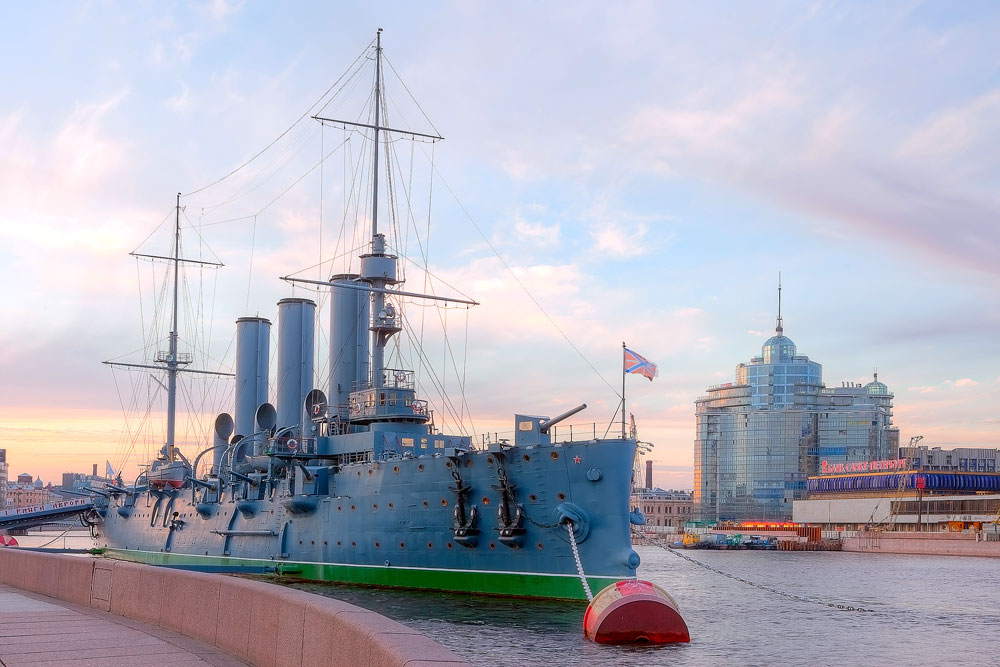 The Aurora (currently undergoing renovation). Source: Lori / Legion-Media
The Aurora (currently undergoing renovation). Source: Lori / Legion-Media
It was right here, on English Embankment, near Blagoveshchensky Bridge, that the cruiser Aurora fired the fatal shot that marked the beginning of the October Revolution on Oct. 25, 1917, ushering in a period of upheaval that destroyed the lives of many people forever and changed the country beyond recognition.
After the revolution all Englishmen left Russia, and their houses were nationalized and given to different ministries and communal flats. The two streets that had once formed the heart of the city’s English community were given new names: Embankment of the Red Fleet and Maclean Prospekt (after leading British Marxist and later chair of the Third All-Russian Congress of Soviets, John Maclean).
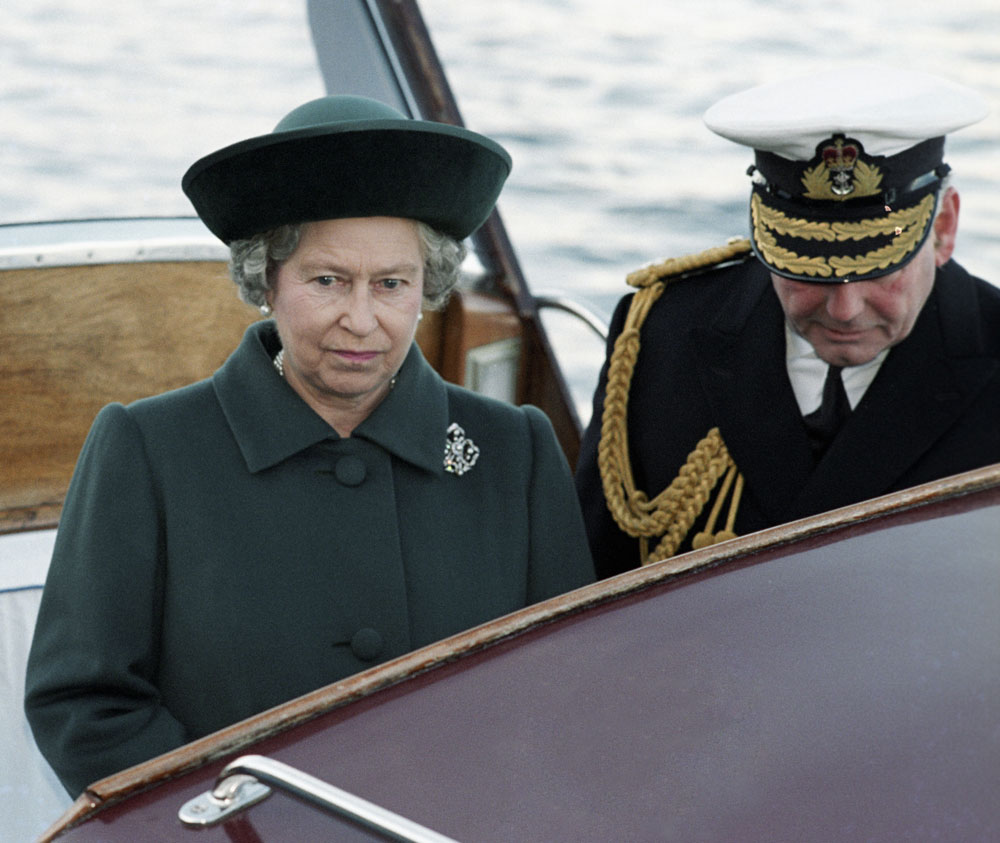 Queen Elizabeth II during her visit to St. Petersburg in 1994. Source: RIA Novosti / Alexei Varfolomeev
Queen Elizabeth II during her visit to St. Petersburg in 1994. Source: RIA Novosti / Alexei Varfolomeev
It was only in 1994 that these two streets finally saw their names restored in connection with the visit of Queen Elizabeth II to St. Petersburg, which itself had seen its original name reinstated just the year before.
Thanks to Her Majesty we now have an opportunity to walk along the English Prospect and the English Embankment again and remember all those people who lived, loved, worked and built the new capital here, and learn more stories and legends of English St. Petersburg.
Read more: Layers of history: Explore 10 different eras in St. Petersburg
All rights reserved by Rossiyskaya Gazeta.
Subscribe
to our newsletter!
Get the week's best stories straight to your inbox
